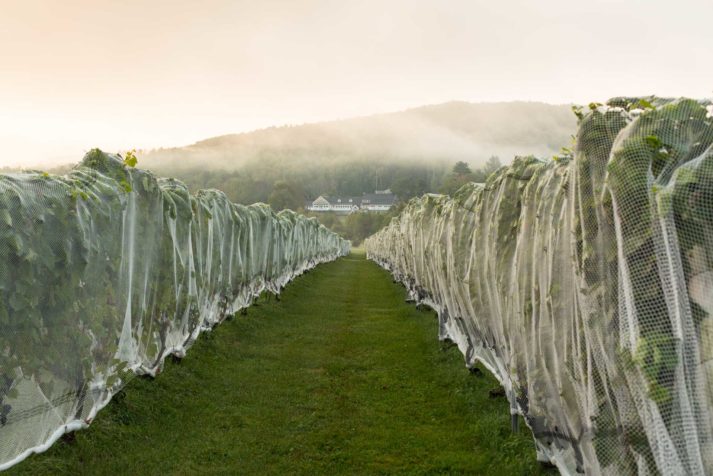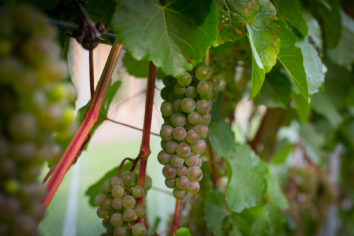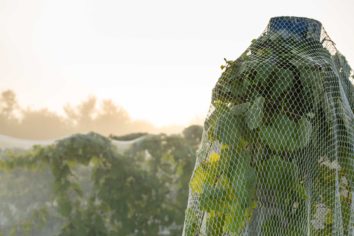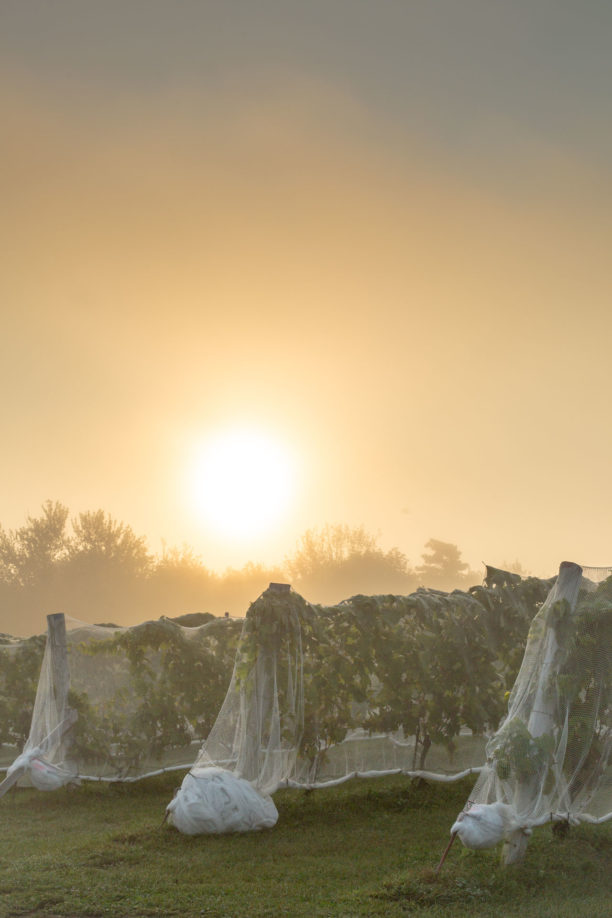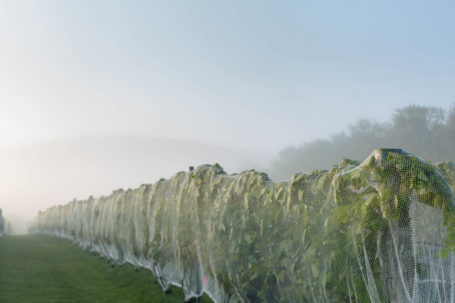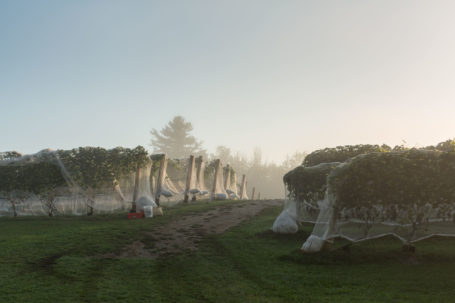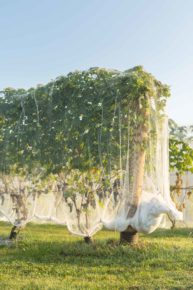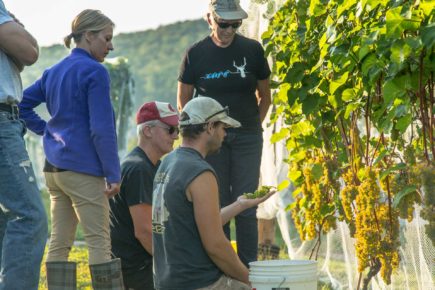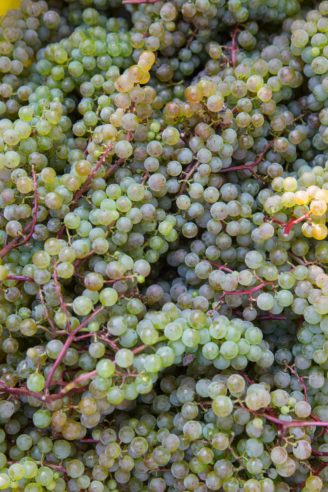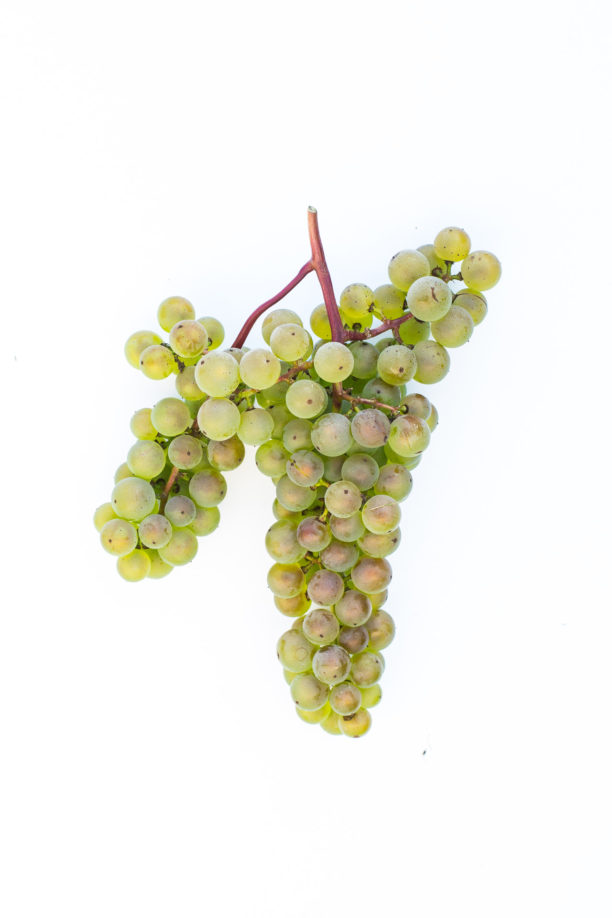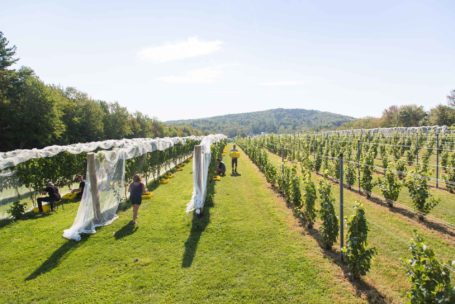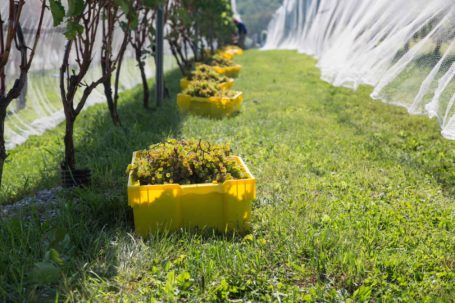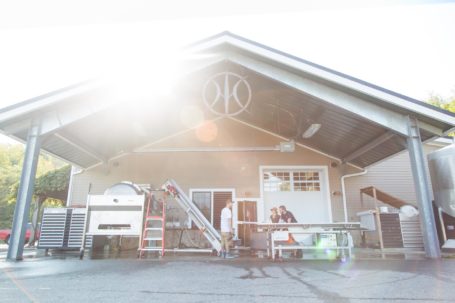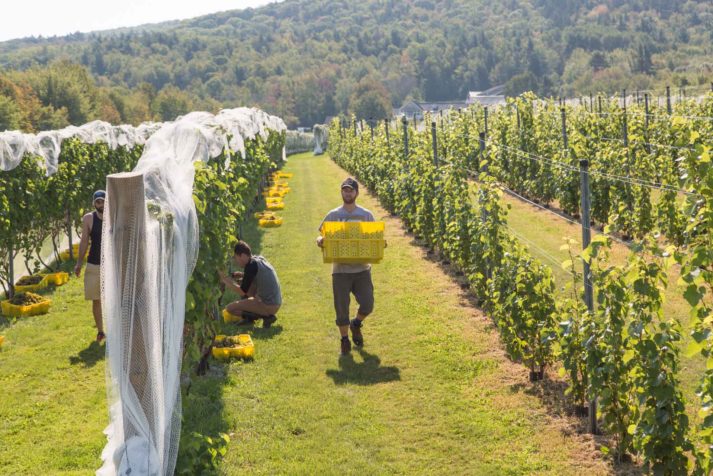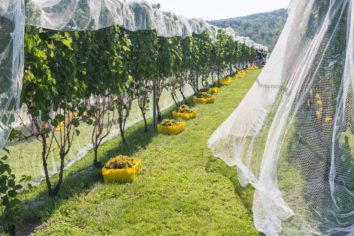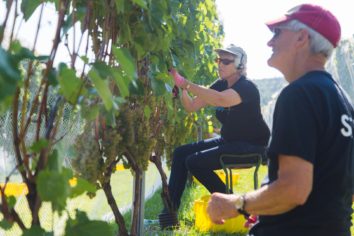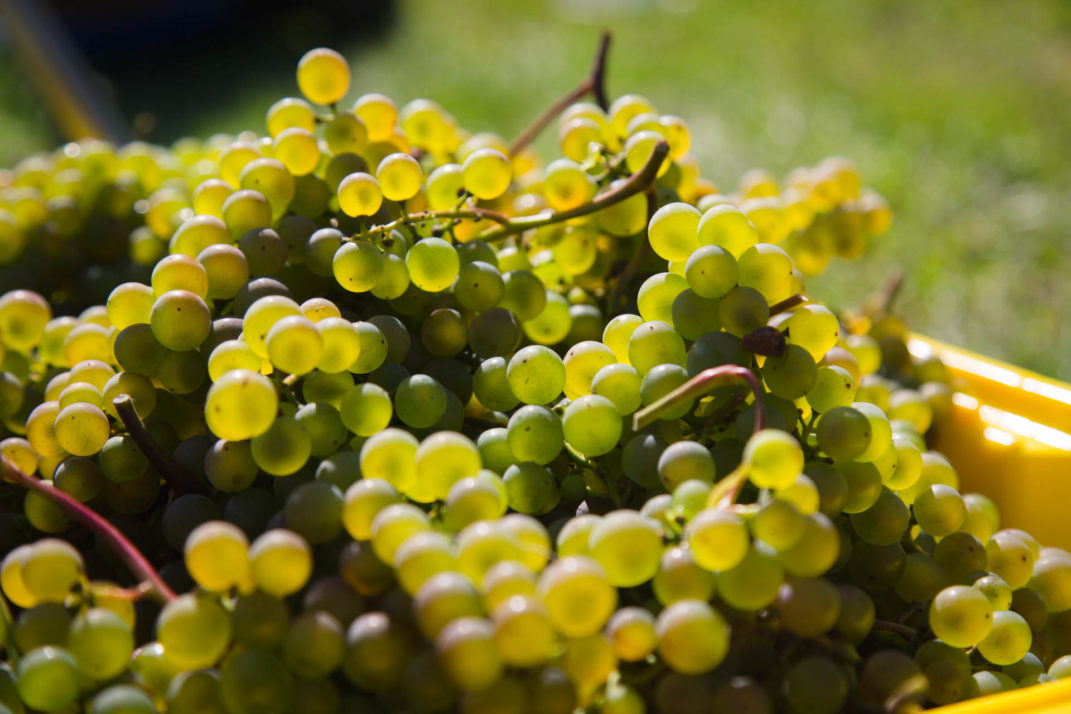Crush begins with L’Acadie blanc
A little over a month ago, Crush, the period in time in which we harvest, receive, crush, and begin the winemaking process began. On September 17th, our team and a group of harvest volunteers came to our winery in Lincolnville and picked 13 rows of L’Acadie blanc, approximately 5.2 tons (10,400 lbs) L’Acadie blanc.
L’Acadie Blanc is an early to mid-ripening grape which suits our growing season in Maine well. Created in 1953 by grape breeder Ollie A. Bradt in Niagara, Ontario at the Vineland Horticultural Research Station, L’Acadie blanc has to the potential to be very productive and high yielding. L’Acadie Blanc contributes floral and honeyed aroma notes to our estate wines.
Making Cellardoor estate wines
In our sparkling based estate wines, like our Blanc de Blancs, we look to harvest our fruit with low sugar and high acid. The grapes are preferably hand harvested on a cool morning and whole clusters pressed gently. The juice settles for a couple of days before we rack off (siphoning the wine off of) the sediment and adding yeast to begin the fermentation process.
During this first fermentation, the added yeast turns the sugar in the pressed juice into alcohol and carbon dioxide. Depending on the kind of yeast and the temperature, the process can take between seven days up to two weeks.
After fermentation, if the acid (pH) is really high, we will go through malolactic fermentation for another month or two. Malolactic fermentation is a standard process in red winemaking, and sometimes in whites, in which tart-tasting malic acid, naturally present in grape must, is converted to softer-tasting lactic acid.
Once the alcoholic and malolactic fermentations are complete, the wine is prepared for bottling for the second fermentation in bottle. When the base wine is ready, it is mixed with yeast and sugar then put into bottle where it ferments yet again. (PATIENCE PEOPLE!) Once fermentation is complete, the wine and yeast stay in bottle for about a year and a half to 2 years before we disgorge (pop the yeast out).
Once disgorged we add a dosage (a little sugar for balance) and cork the bottle. We give the wine time to rest and recovers for three to six months before it is ready to enjoy. While you’ll have to wait a couple years to taste the 2018 vintage of Blancs de Blancs, our 2015 Blancs de Blancs will be ready to drink come November!
As our vineyard has matured, our Blancs de Blancs has evolved. In past vintages, our Blancs was a blend of Frontenac gris and Frontenac blanc. But, like 2017, our 2018 Blanc de Blancs will be 100% L’Acadie. Frontenac gris makes a signature appearance in our currently available Late Harvest Frontenac Gris.
In the meantime
While keeping a close eye on our own harvest, we are also receiving, crushing, and beginning fermentation on the rest of our upcoming 2018 vintages. As always, we’ll have some favorites – a Bordeaux style blend for Ned Said Red with grapes from Washington and California and our ever popular Cayuga wine, Perfect Stranger, with grapes from New York. Of course, like every year we find ourselves inspired by the chemistry of certain harvests and can’t wait to surprise you in a few years with blends and grapes you might not be so familiar with. Our goal, as always, to create wines that we are proud of and guests enjoy.

